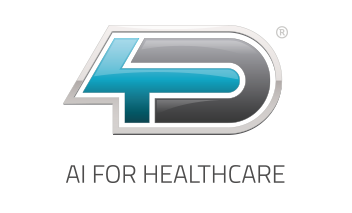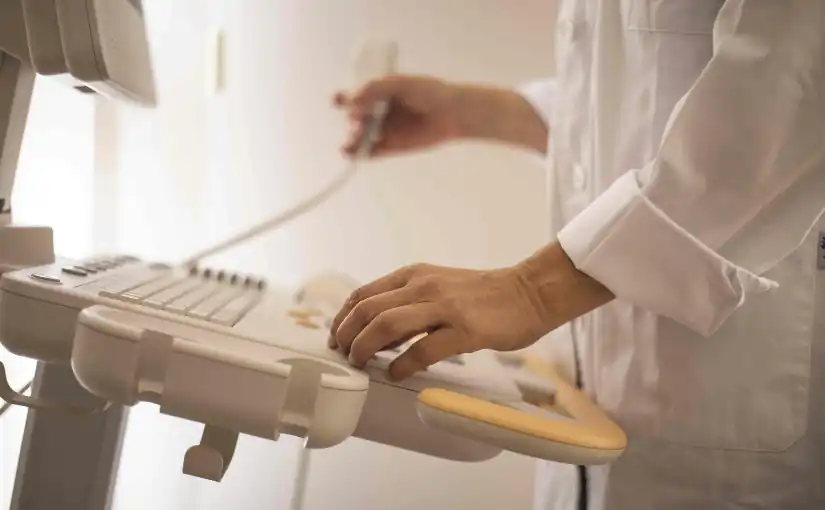Regulation of medical devices is an essential pillar in ensuring patient safety, medical efficacy and diagnostic quality throughout the healthcare system. All medical devices must meet stringent legal and technical requirements before they can be marketed and used in clinical practice.
In this context, the application of different measures and regulations for the regulation of medical equipment aims to protect users. And, at the same time, to bring confidence to healthcare professionals, transparency to manufacturing processes and traceability throughout the supply chain.
However, it is important to note that certifying a medical equipment is not just another administrative procedure. It is a multidisciplinary process ranging from design and clinical validation to the implementation of quality systems, risk management and post-marketing surveillance.
But what are the different regulations and processes that must be applied to market and use medical devices in clinical practice? In the following article, we provide a complete guide to the regulation of medical equipment and the current legal frameworks, both at national, European and international level.
What are medical devices?
The medical equipment is devices, apparatus or systems used in the prevention, diagnosis, treatment or rehabilitation of diseases and medical conditions. They range from simple medical devices such as syringes or thermometers to complex technologies such as medical equipment, such as magnetic resonance imaging, ultrasound scannersremote monitoring systems or AI software of radiodiagnostics based on artificial intelligence.
Medical devices can be classified into different categories according to their level of risk for the patient and the user, which directly influences the type of regulation and certification that they must comply with.
Regulation of medical devices: The different regulations and processes
Regulation of medical devices varies from country to country or region to region, but in general, all medical devices are regulated in the United States. regulatory frameworks share a common goal: to ensure that the products are safe and effective for clinical use. Below, we review the different regulations and processes:
CE marking in the European context
In order to launch a medical device or medical equipment on the market and be marketed in the European Union, it must be CE marked. The CE marking is the legal requirement that authorizes the marketing of a medical device in the European Union (EU) and the European Economic Area (EEA).
Indicates that the product complies with the provisions of Regulation (EU) 2017/745 on medical devices.the so-called MDR regulationsand can circulate freely within the European market. This regulation came into use in 2017 and replaced the previous Directive 93/42/EEC with the aim of strengthening the safety, traceability and post-market control of devices.
The first step in determining the CE marking process is to carry out the classification of medical equipment according to risk. Depending on the type of riskthe MDR standard defines a level of technical documentation and a regulatory process to ensure access to the European market. Specifically, medical devices are divided into four classes:
- Class ILow risk
- Class IIaModerate risk
- Class IIbHigh risk
- Class IIIVery high risk. Use of critical implantable/invasive devices
What does CE marking imply?
The CE marking is not a seal of quality, but rather a legal compliance indicator at European level. It guarantees that the manufacturer has followed a series of processes that certify the safety and efficacy of the medical device:
- Evaluation of the device according to the legal requirements of MDR regulations.
- The use of the medical device is safe and effective when used as directed.
- Implementation of a adequate quality management system.
- Use of post-marketing surveillance mechanisms and continuous clinical follow-up.
- Assessment by a Notified Body.
FDA Approval in the United States
In the United Statesthe Food and Drug Administration (FDA) is the government agency responsible for the regulation, supervision and authorization of the marketing of medical devices.
It is developed through the Center for Devices and Radiological Health (CDRH)The FDA is an entity that ensures that all medical devices are safe, effective and manufactured according to quality standards before reaching the market. It classifies products into three categories:
- Class ILow risk, subject to general controls.
- Class IIModerate risk, require a 510(k) submission to demonstrate that they are substantially equivalent to another legally marketed device.
- Class IIIHigh risk. Require premarket approval (PMA) with detailed clinical evidence.
Key differences between FDA Approval and CE marking
| Appearance | FDA (USA) | EC (EU) |
|---|---|---|
| Scope | United States and countries that recognize the FDA | European Union and countries that accept CE marking |
| Target | To authorize the marketing of medical devices under the direct supervision of the FDA. | To certify that the product complies with the safety and performance requirements defined in the MDR Regulation. |
| Approach | Stricter pre-market assessment | Evaluation based on manufacturer's conformity |
| Clinical review | PMA requires clinical trials | Only Class III requires robust clinical evidence |
| Times | Long, especially in PMA | More agile in classes I and IIa |
| Evaluating Agency | Public agency (FDA) | Independent Notified Body |
Regulation of medical devices in Spain: The role of the AEMPS
At Spainthe Spanish Agency of Medicines and Health Products (AEMPS) is the body responsible for applying national and European regulations on medical devices. Its main mission is to guarantee the quality, safety, efficacy and correct information of all medical devices marketed or used in the country.
The AEMPS under the Ministry of Health and acts as the competent authority to supervise compliance with Regulation (EU) 2017/745 on medical devices (MDR), as well as other national provisions. In Spain, the legal framework on the regulation of medical devices is articulated in terms of the following. regulations:
- Royal Decree 192/2023, which regulates medical devicesIt is the most recent and complete national regulation on medical devices. It aims to adapt Regulation (EU) 2017/745 to the Spanish legal system.
- Law 29/2006, on guarantees and rational use of medicines and health products.This Law is the general legal framework for everything related to medicines and medical devices in Spain. Although it was born focused on pharmaceuticals, it has been modified and extended to include medical devices.
- Technical guides and procedures issued by the AEMPS itself.The AEMPS regularly issues technical documents, instructions and guides that help manufacturers and economic agents to correctly interpret and comply with the standards.
ISO standards: Standardization and quality control in medical devices
The ISO (International Organization for Standardization) standards are voluntary international standards that establish best practices for the design, production, evaluation and management of products and services.
In the medical devices field, are not a substitute for legislationsuch as MDR regulations in the European context or FDA approval in the United States. However, they are key instruments for demonstrate compliance with regulatory requirements and ensure the safety, efficacy and traceability of the product. The most relevant ISO standards are highlighted below:
ISO 13485:2016 - Quality management systems for medical devices.
It is the most important standard in this sector. It establishes the requirements for a quality management system (QMS) specifically tailored to medical device manufacturers and distributors.
Regulatory application
Not required by lawbut the implementation of an ISO 13485 system makes it easier to obtain CE markingIt reduces errors and demonstrates a commitment to quality and patient safety.
ISO 14971:2019 - Risk management for medical devices.
Establishes a structured framework for identifying, assessing, controlling and monitoring risk related to a medical device throughout its life cycle.
Regulatory application
It is mandatory in the context of the MDR to demonstrate that a thorough risk assessment has been performed. It is closely integrated with the technical documentation and clinical evaluation of the device.
ISO 10993 - Biological evaluation of medical devices
This set of standards addresses the biocompatible tests necessary to ensure that the materials in contact with the human body are non-toxic or provoke adverse reactions.
Regulatory application
These tests are mandatory for all devices that come into direct or indirect contact with the human body. Their compliance is part of the technical dossier submitted for CE marking or FDA approval.
ISO 14155: Human clinical trials of medical devices - Good clinical practice
Establishes the principles and requirements for the design, conduct, recording and presentation of clinical trials made in humans with medical devices.
Regulatory application
It is mandatory for manufacturers conducting prior clinical studies to CE or FDA certification, especially for class III or implantable devices.
ISO 62304: Software for medical devices - Software lifecycle processes
Defines the software development, maintenance and support requirements used as part of a medical device, or what constitutes a Software as a Medical Device (SaMD).
Regulatory application
As a result mandatory for any healthcare software that affects the diagnosis, treatment or monitoring of patients, either standalone or integrated in hardware. This is a key aspect in products such as medical apps, PACS systems or intelligent ultrasound scanners.
Conclusion
Patient safety starts with responsible certification. Regulatory applications are a key aspect of achieving responsible patient safety. safe and effective commercialization in the field of medical devices. Beyond a mere legal requirement, they represent a structured and rigorous process that ensures that medical devices have been designed, evaluated and manufactured under the most stringent quality standards. high standards of quality, safety and efficiency.
Whether under the CE marking framework in Europe, the FDA in the United States or national health authorities such as the AEMPS in Spain, evaluation and certification procedures are indispensable to ensure that technological innovation in the healthcare sector reaches the market in a responsible, efficient and sustainable manner.
Do you need medical equipment? In that case, do not hesitate to contact us and our 4D team will help you choose the best medical device according to the needs of your clinic or hospital.
Bibliography
European Commission (2017). Regulation (EU) 2017/745 of the European Parliament and of the Council on medical devices.. Official Journal of the European Union. https://eur-lex.europa.eu/legal-content/ES/TXT/?uri=CELEX%3A32017R0745
Community of Madrid (n.d.) What is the CE marking and how to identify it? Retrieved from https://www.comunidad.madrid/servicios/consumo/marcado-ce-es-identificarlo#:~:text=El%20marcado%20CE%20es%20un,en%20el%20reglamento%20correspondiente%20al
FDA - U.S. Food and Drug Administration (n.d.). Premarket Notification [510(k)].. Retrieved from https://www.fda.gov/medical-devices/premarket-submissions/premarket-notification-510k
FDA - U.S. Food and Drug Administration (n.d.). Premarket Approval (PMA). Retrieved from https://www.fda.gov/medical-devices/premarket-submissions/premarket-approval-pma
FDA - U.S. Food and Drug Administration (n.d.). Classify Your Medical Device. Retrieved from https://www.fda.gov/medical-devices/overview-device-regulation/classify-your-medical-device
International Organization for Standardization (n.d.). Standards catalogue. Retrieved from https://www.iso.org/standards.html


